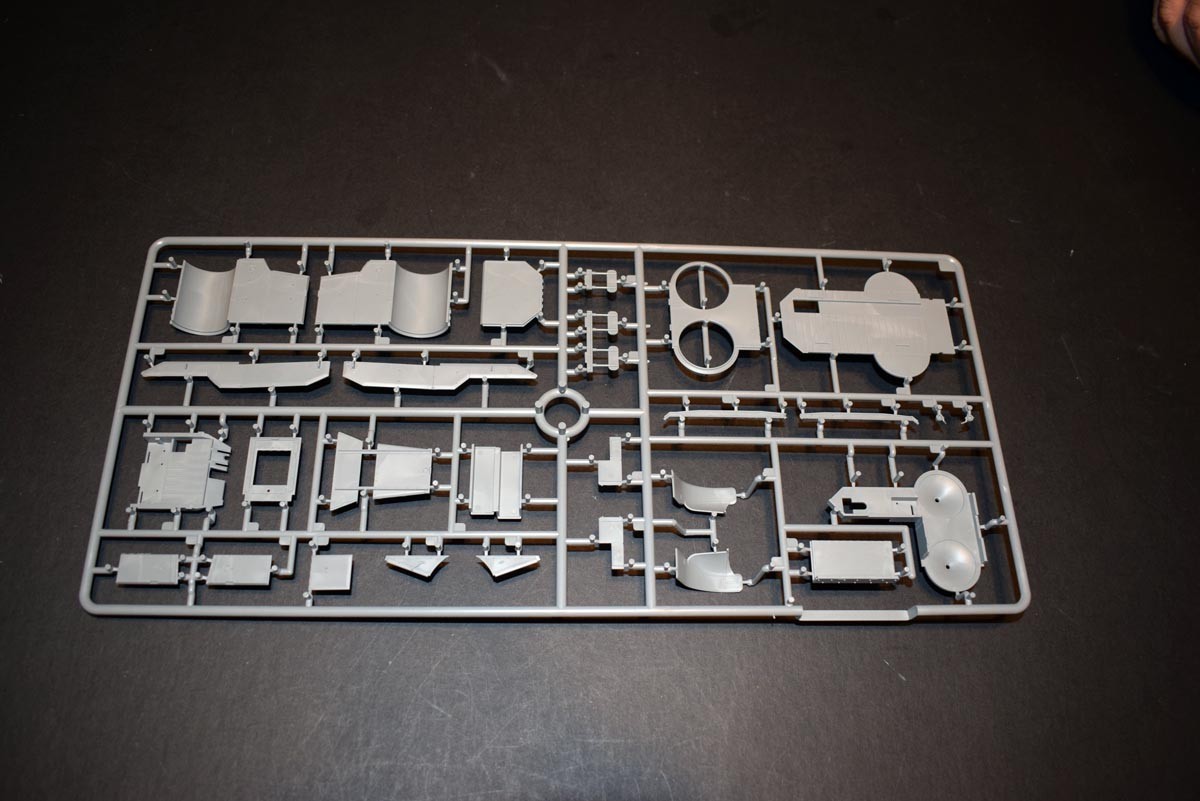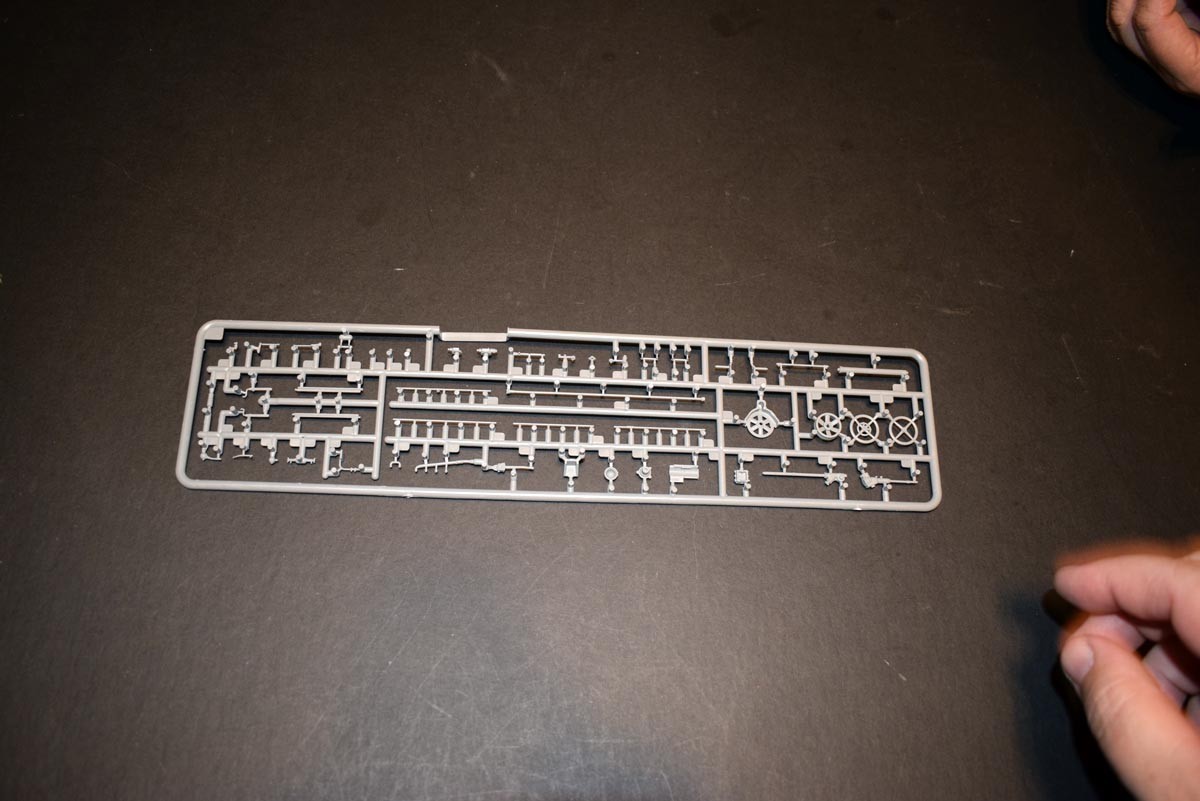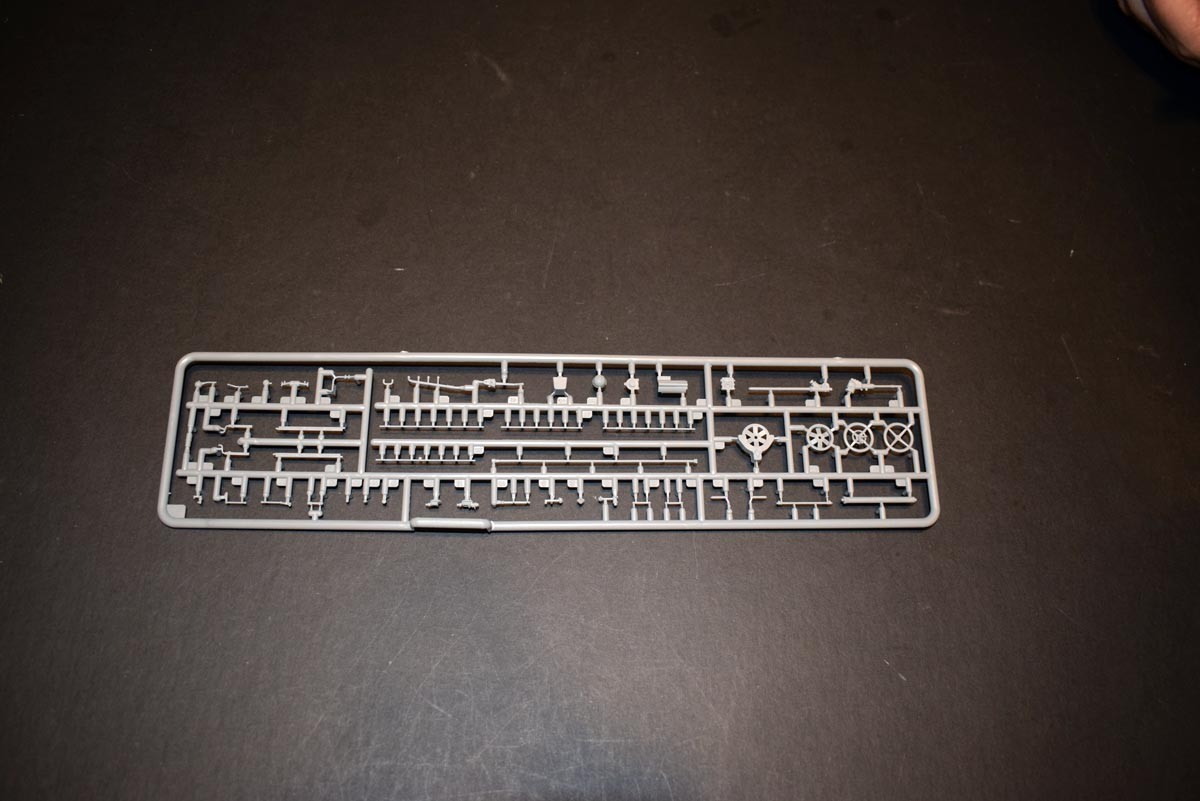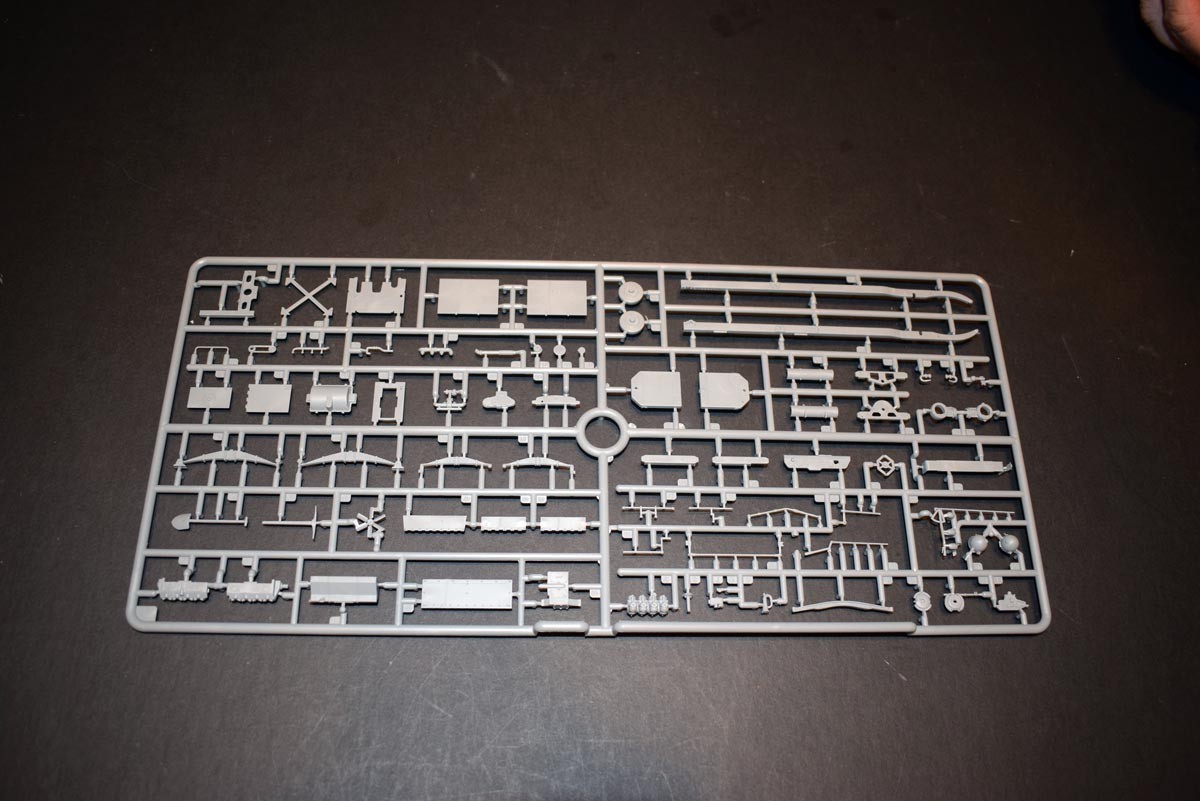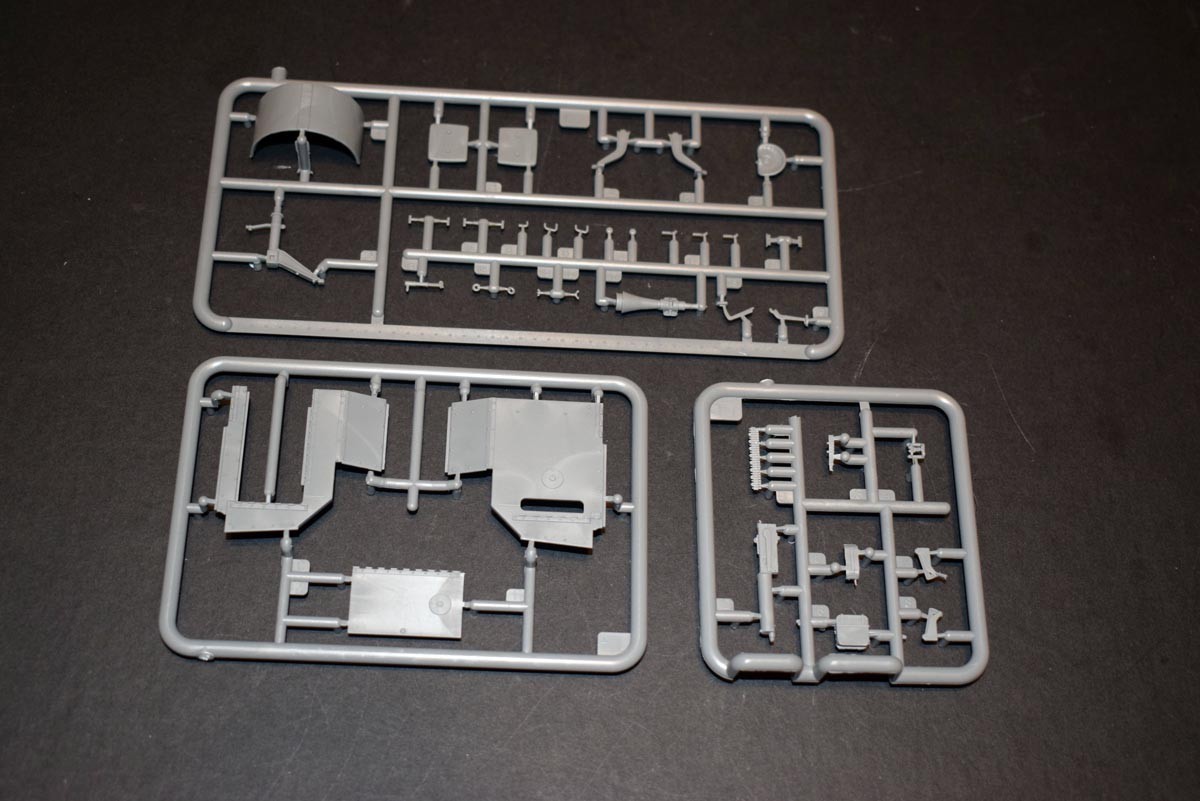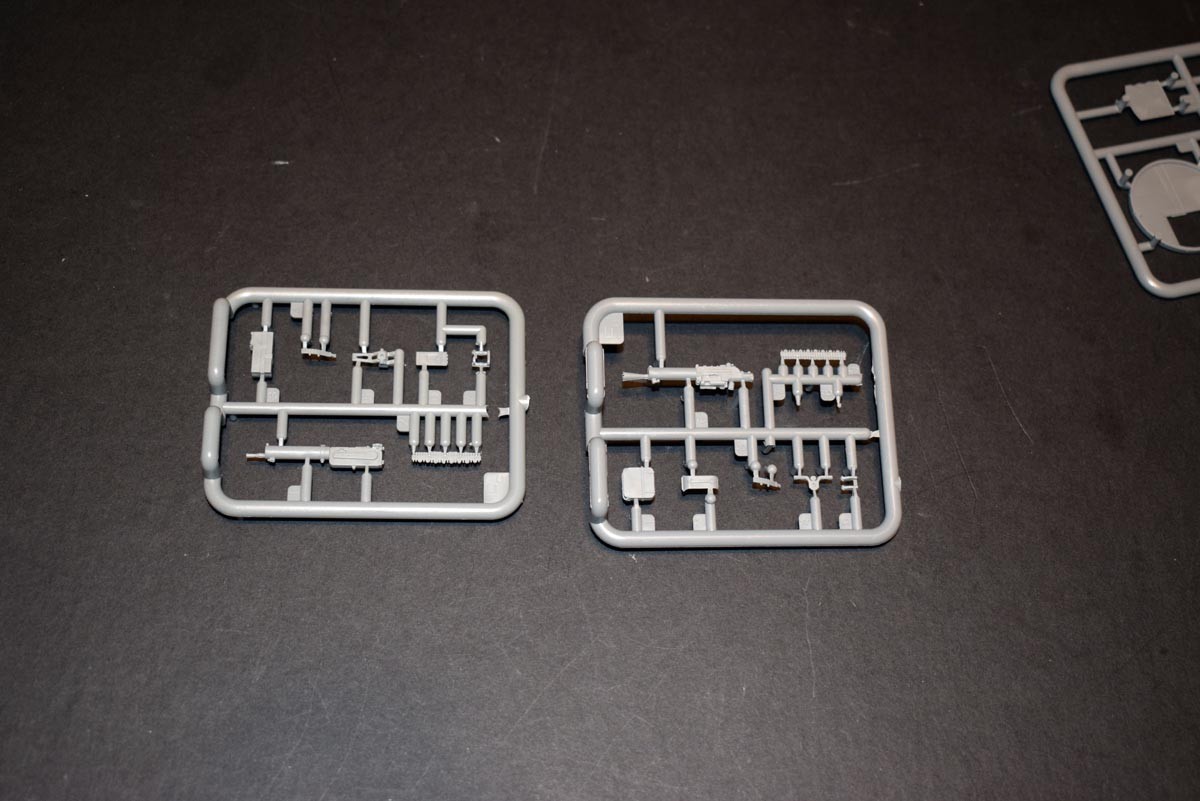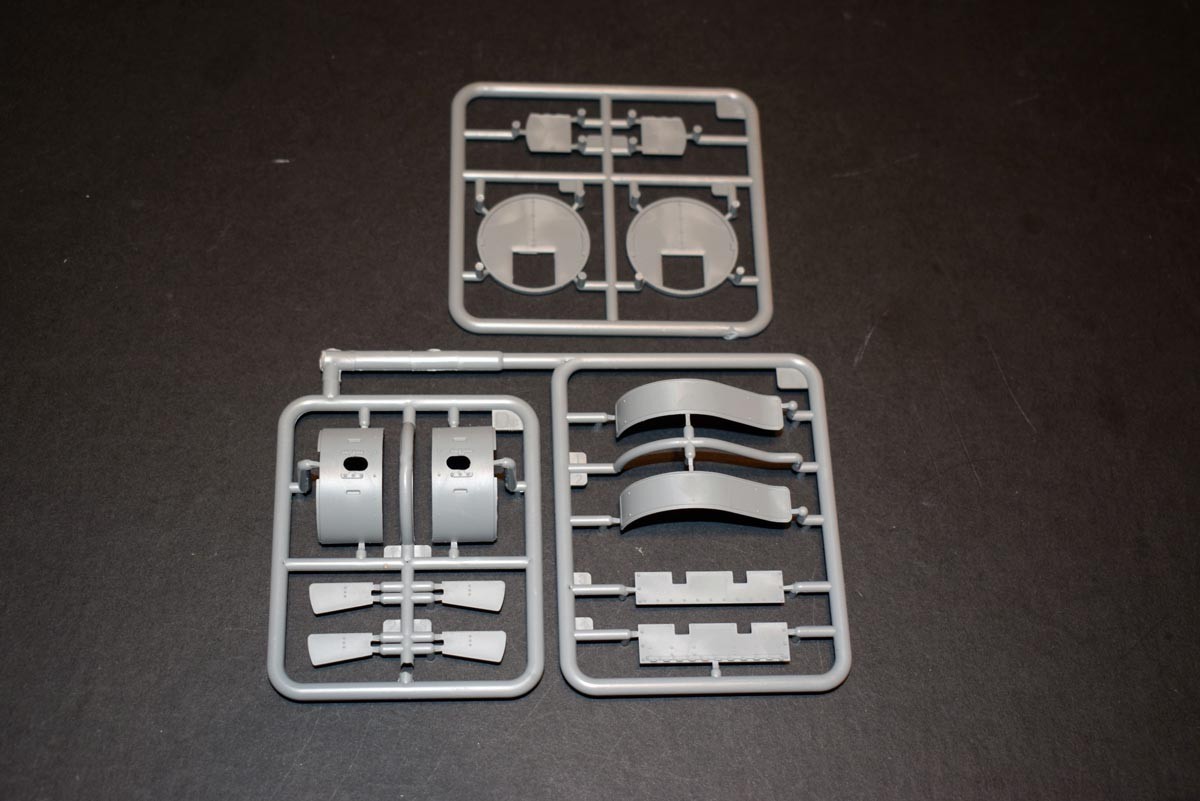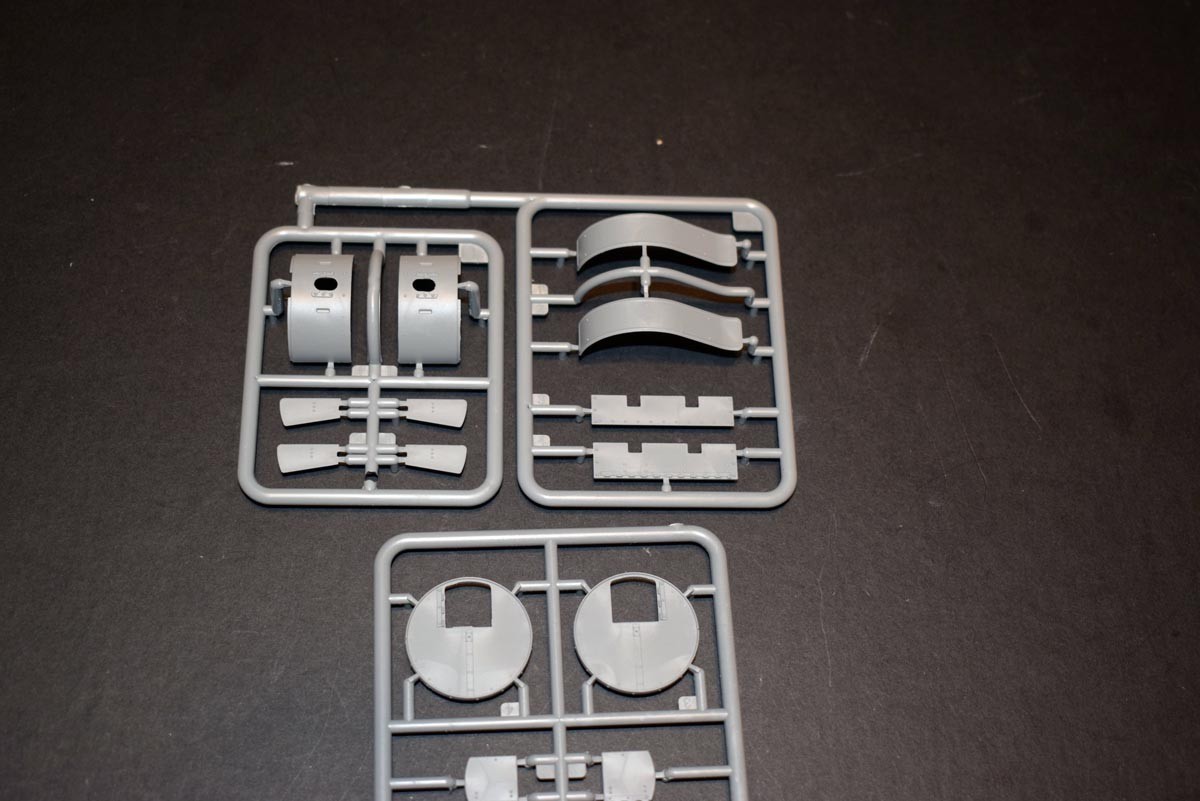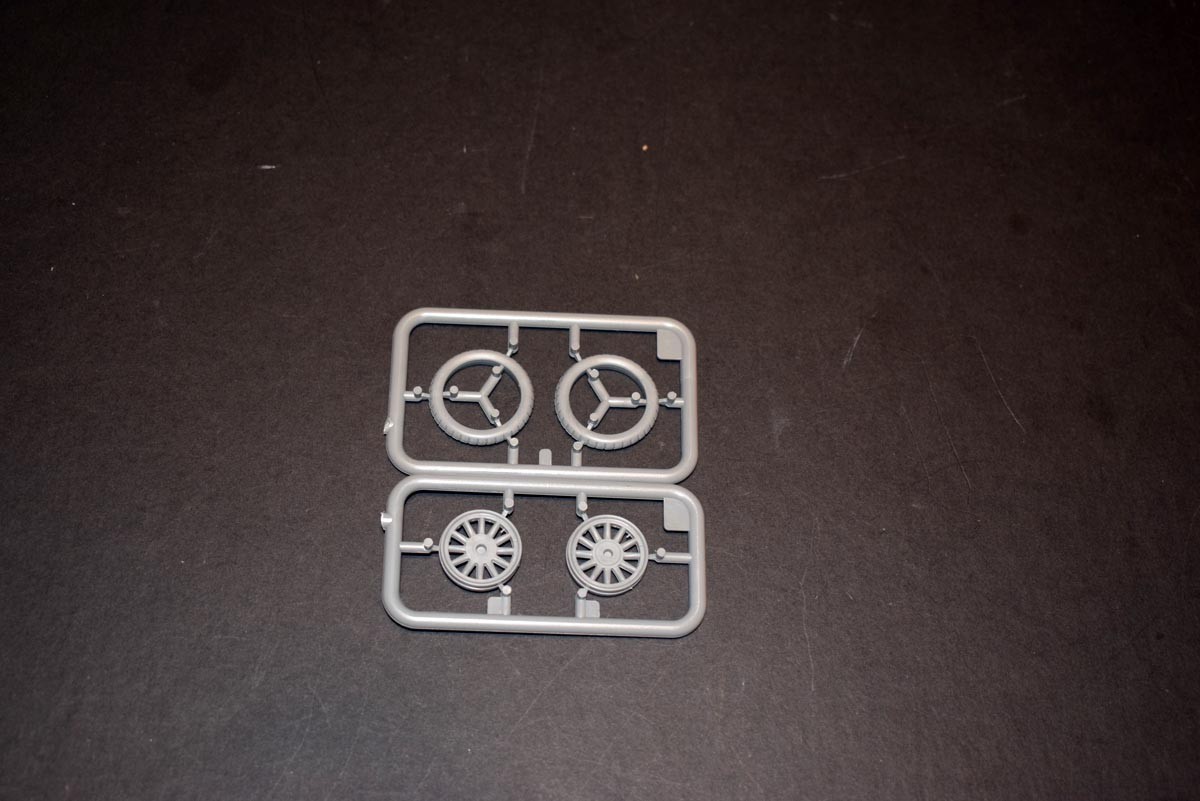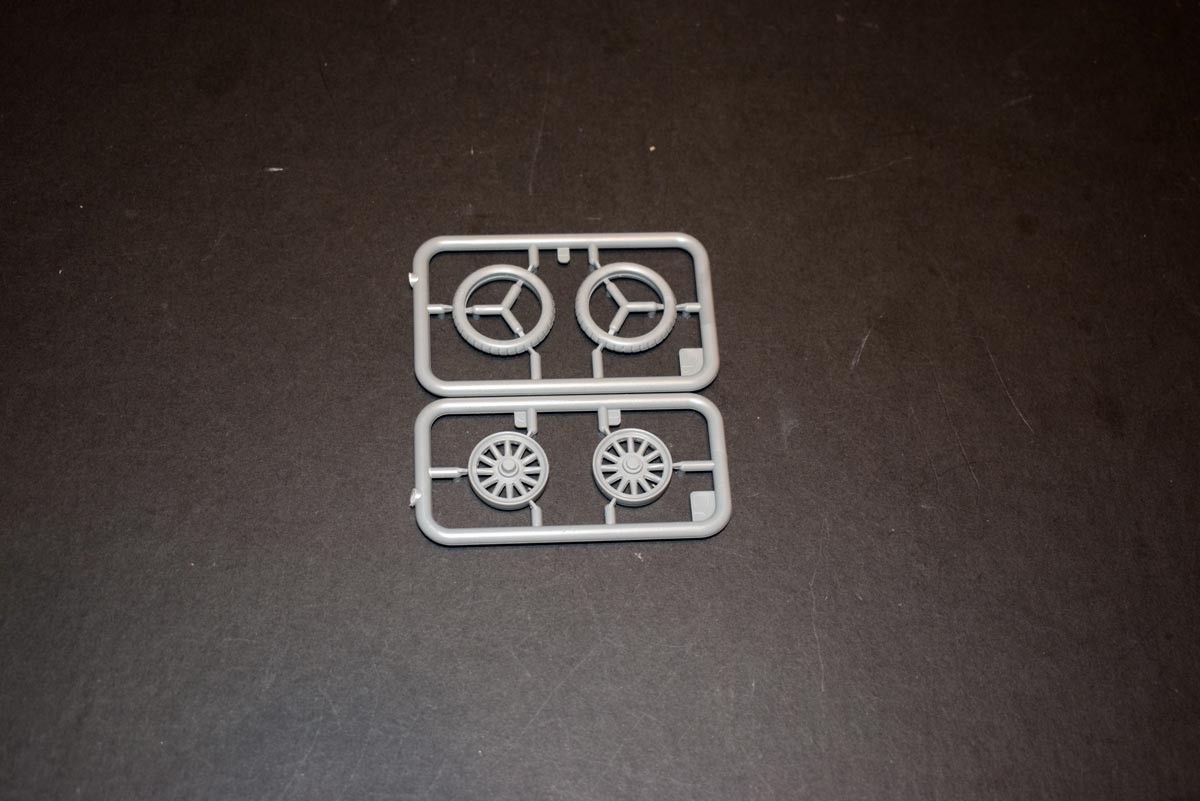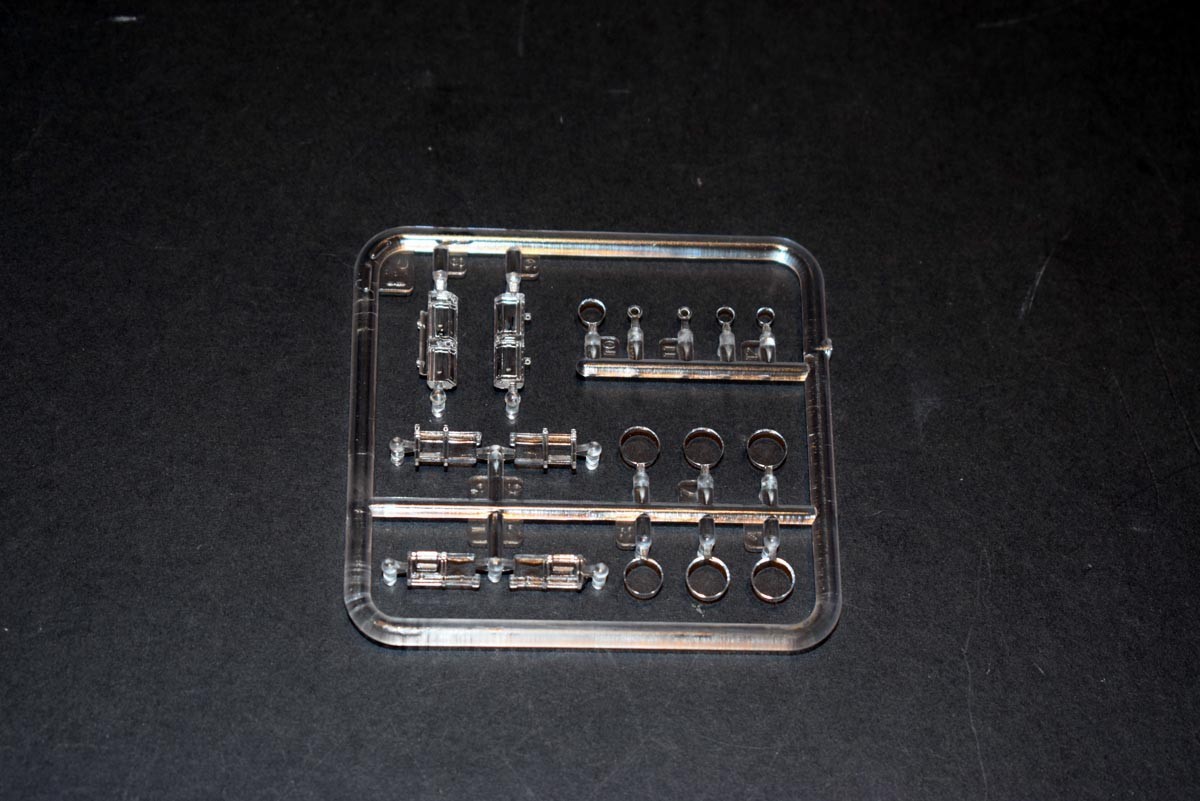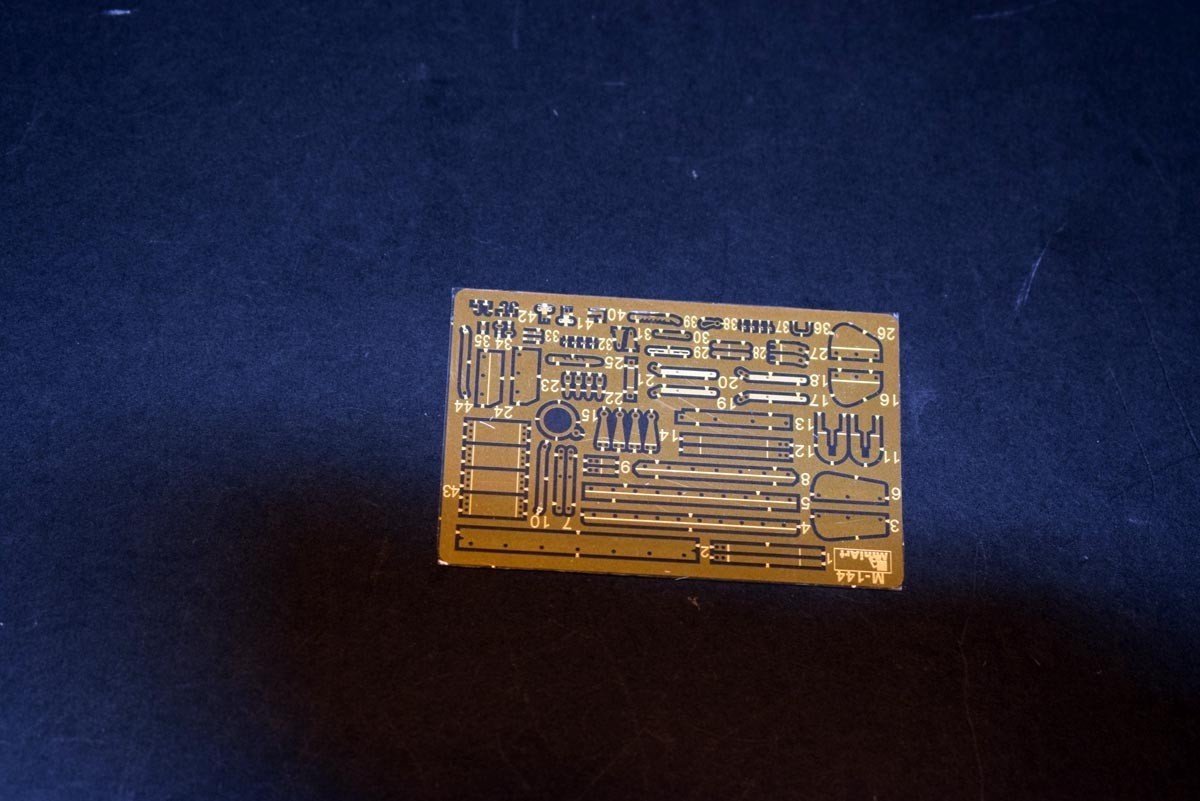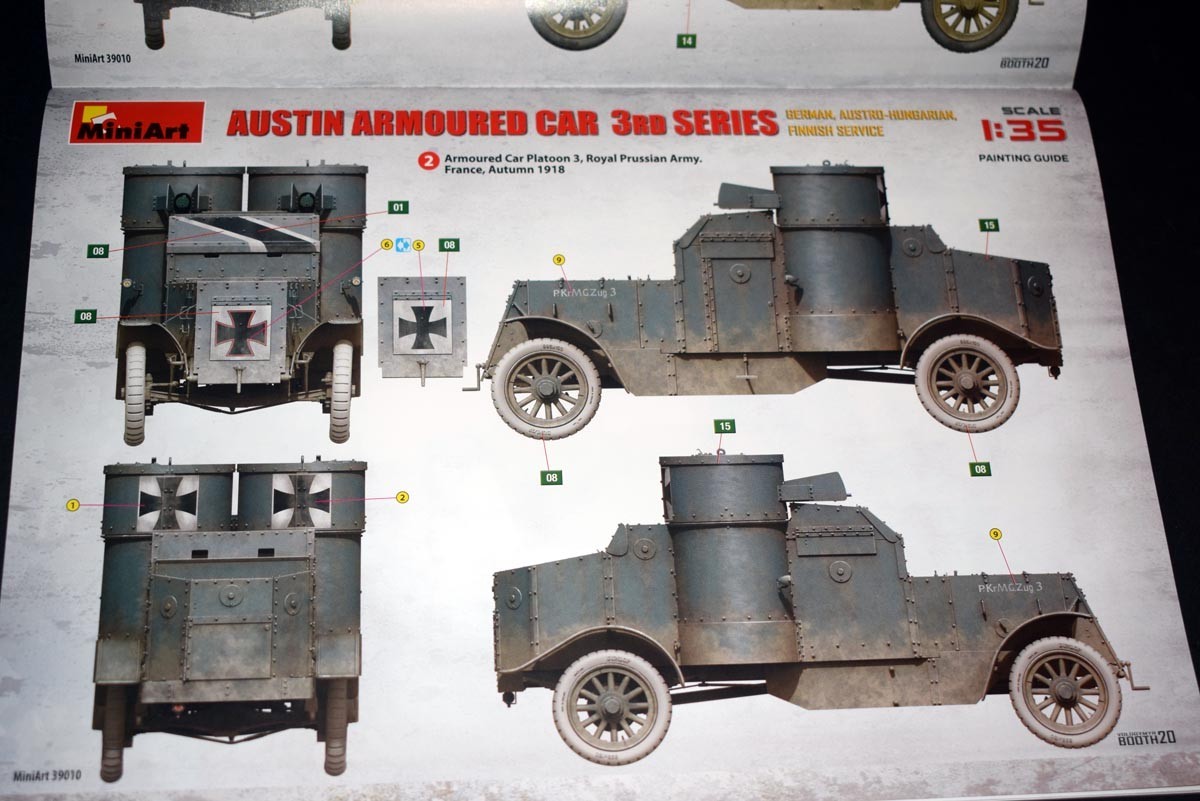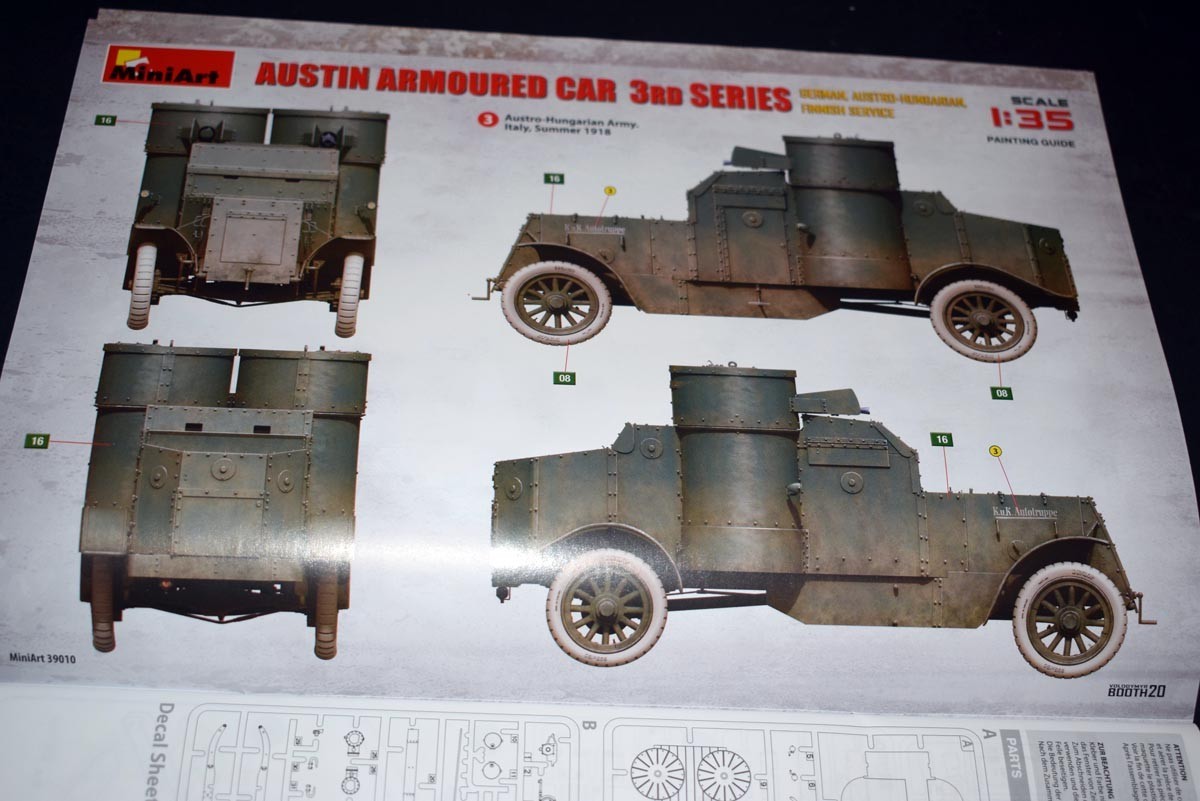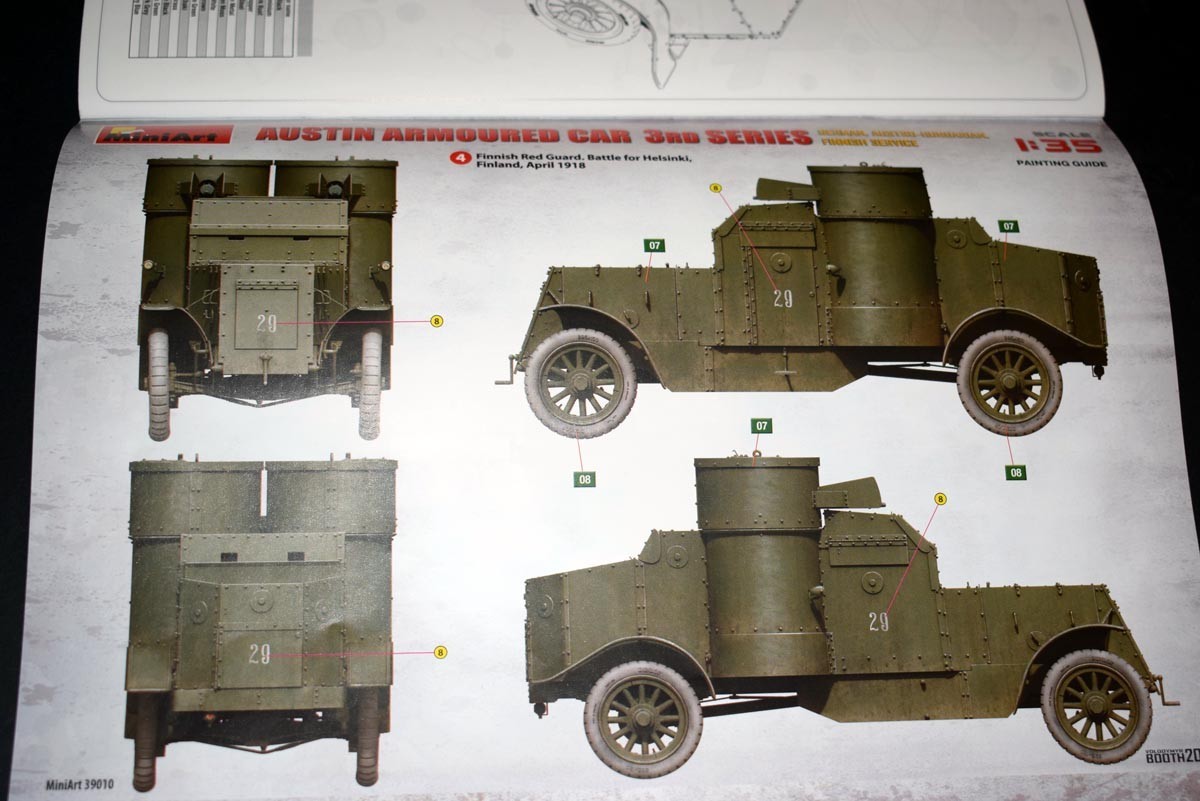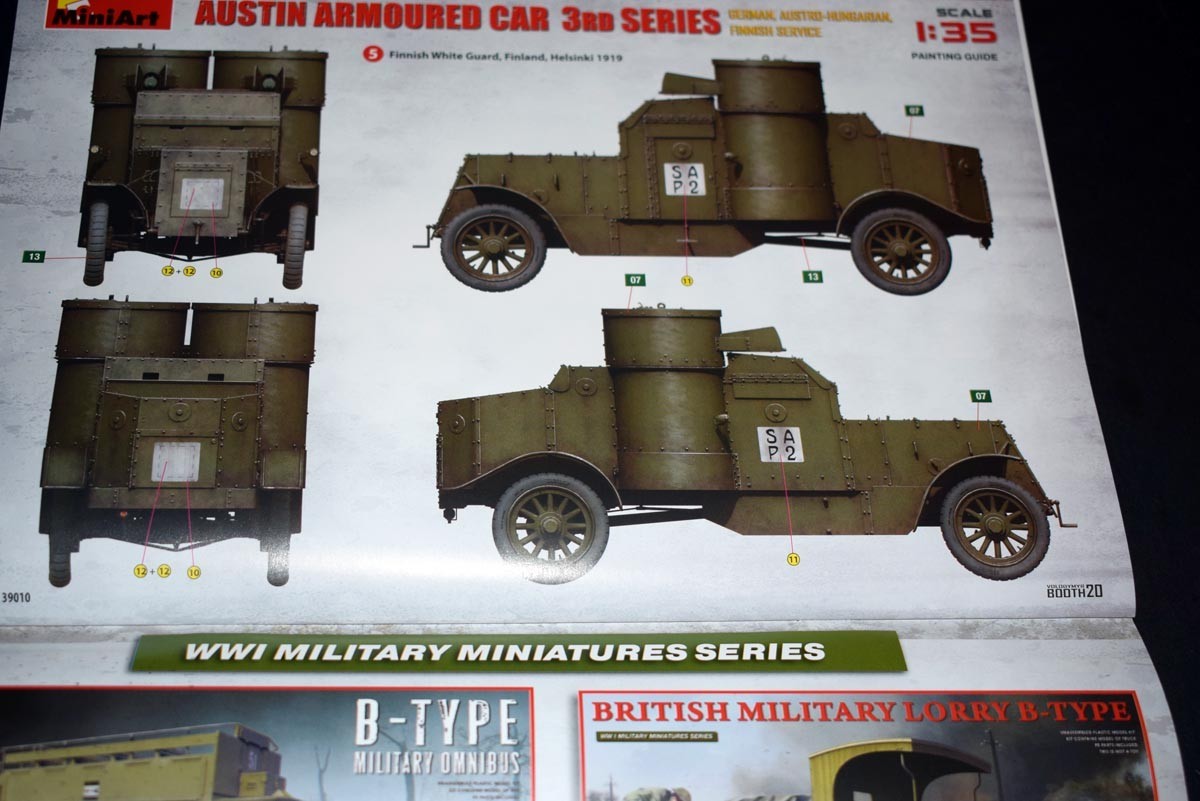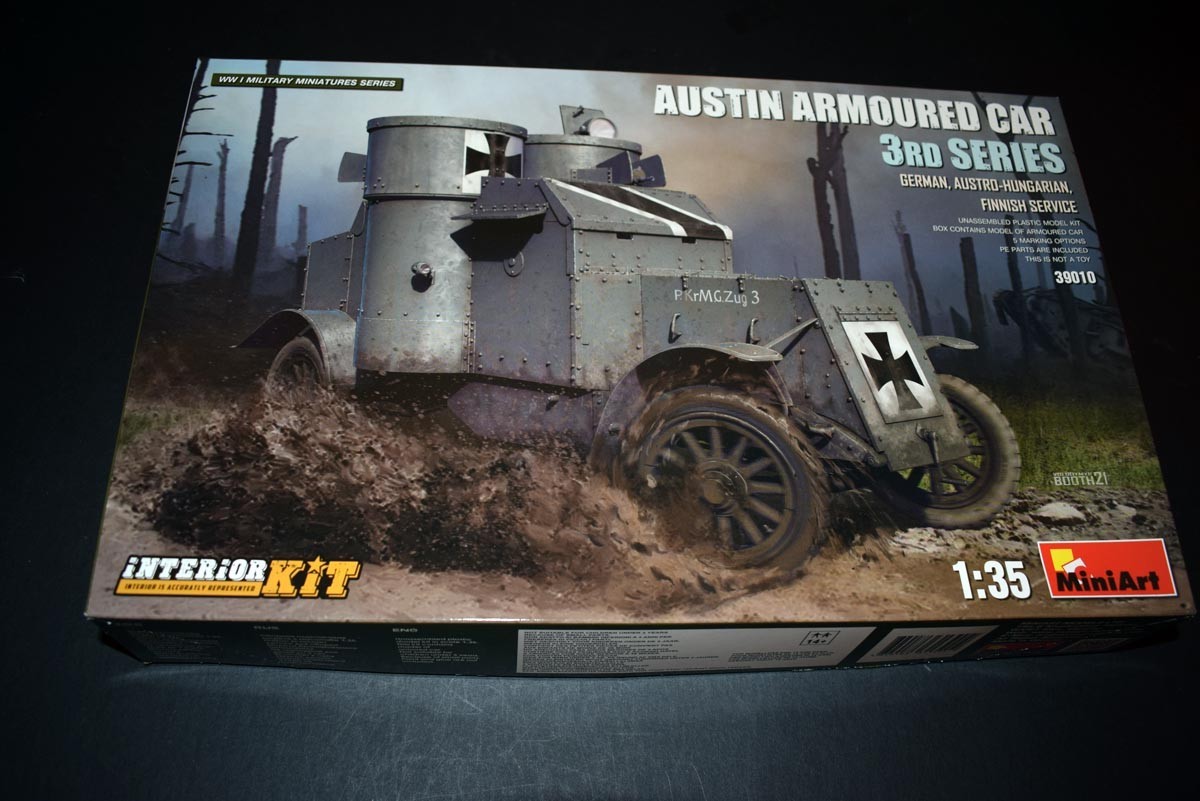
Introduction
The Austin armoured car over the course of its life appears to have been pressed into service by many different countries. These included - the country that built it, the countries that legitimately brought it, and other that captured them from their previous owners. This particular model is a 3rd series Austin armoured car, and is armed with two MG 08 machine guns which look very similar to the Vickers machine gun and so in my opinion a logical replacement choice.
Review
This offering from MiniArt of the Austin armoured car 3rd series in service with German, Austro-Hungarian and Finnish service is one of MiniArt’s interior kit offerings. The differences in the various armoured cars, in the Austin family are minimal with the base changes being the weapons in the turret, how many wheels are attached to the rear axle, the type of chassis the vehicle is built upon and the shape of the armoured cab.
The model arrives in the usual cardboard tray, with a separate card lid depicting the artwork. Inside all of the model parts are provided in a single plastic bag. The clear sprue and decals have been placed in a plastic bag within the original plastic bag, and is the one part of MiniArt’s packaging I am disappointed with, the other being placing all of the sprues in a single bag. To finish on a high here, I do appreciate that MiniArt do protect the photo etch parts in a card envelope that usually does a very good job. An examination of the contents in this release does not raise any serious concerns, other than MiniArt now produces some very finely moulded pieces, that could easily be broken either in transit, or removing the piece from the sprue.
The chassis of the model is a multi-part offering that has enabled MiniArt to provide a great deal of detail that otherwise would not be possible. This approach does mean that the modeller needs to take care to insure that the chassis is assembled square; I advise that the chassis is assembled on a cutting mat with a square grid present.
A full engine and gearbox are provided and it is very impressive in my opinion due to some very crisp detail. I will say that some of the mating face locations are a pain to get good access at and a number of very small photo etched parts are used which could be problematic for those like me whose eyesight is not what it was and large hands that are not as steady as they use to be. Beyond a small amount of wire being needed for detail I believe all is good here. A particularly nice touch is that the foot pedals attach to the actuator rather than a spot on the floor. Moving to the rear drivers post and the foot pedals there are supplied with plastic actuator rods to the front and for the modeller who wants to add further detail MiniArt has provided detailed parts for use with metal rods and provided all of the needed information. MiniArt is really coming on leaps and bounds with what they provide.
The axle is quite industrial at the rear, but has still been provided with some very nice detail that will please the eye. The front axle is indicated as being for straight ahead only, but looking over the parts I believe showing the front wheels turned only requires the modeller to set the angle of the steering joint. There is some further very fine wire detail that I believe replicates the brake pipes; I feel that this approach by MiniArt brings the potential for super detailing into the realm of anyone willing to try. The wheels are the wooden spoke offerings which is correct for the provided model(the modeller wanting to build something a little later need only add metal wheels or plates to protect the spokes for vehicles used between the wars).Unlike the series 3 vehicles all of the vehicles referred to as 1918 pattern had twin rear wheels.
Vehicles of this time period did not have the comfort of the occupants paramount in their minds and so the interior is functional rather that comfortable. The floor of the vehicle is wooden planks with some metal elements and so driving over a grenade would not a good choice. The floor at the front driver’s position slips onto the pedals and then home, so take care. A similar situation at the rear driver’s location but a steadier hand will be needed. Seating for the five man crew is basic with the gunners getting a bench seat next to the rear driver’s position, the modeller who wants to add some small touches could add some form of cushion or even folded uniform to seat on and make the piles a little more comfortable. The front two and single rear seat are provided and again these look basic, but at least these have some provided padding on the back and seat which MiniArt has provided with a very good natural look.
The armour plate is pretty bare on the inner face beyond some riveting detail; the modeller who wants to add a personal touch could add a page from a suitable period magazine or even a drawing by one of the crew on the walls. The MG 08 machine guns in the turrets are very close in look and design to the Vickers machine guns that would have been present to begin with. I do question if the water cooling aspect of these guns would have been catered to, but if it was nothing is provided in this release. These guns are mounted on swivels and the gunner given one of the shaped metal seats seen on old tractors mounted on the swivel.
The armoured exterior is basically metal sheet riveted together and so you have that detail replicated. The only curves are the turrets and mudguards. The engine radiator has a guard protecting it that could be lifted if not in battle. Vision was provided for the driver and commander via vision slots and both front and rear guards could be lifted to improve vision when conditions allowed. The gunners view would I believe have been awful as smoke would obscure vision forward when firing the weapon and the modified sideguards to protect the weapon prevented a view to the side and so they would be reliant on the other crew members I believe.
MiniArt has provided five finishing options for this model, and these are as follows:
Armoured Car Platoon1, Royal Prussian Army, Kyiv, Ukraine, Spring 1918
Armoured Car Platoon3, Royal Prussian Army, France, Autumn 1918
Austro-Hungarian Army, Italy, Summer 1918
Finnish Red Guard, Battle for Helsinki, Finland, April 1918
Finnish White Guard, Finland, Helsinki 1919
Conclusion
This line of armoured cars that have come out so far from MiniArt, with what I would class as full interiors are very high quality models and this release is no different. The aspects of the model that I appreciate most are the oily parts. The engine, gearbox and chassis are of an exceptionally high quality straight from the box, it is just a pity that they require some thought on the part of the modeller to display these aspects. The MG08 fitted into the turret, have been slide moulded and so making life just that little easier for the modeller. This is a truly stunning model series.

